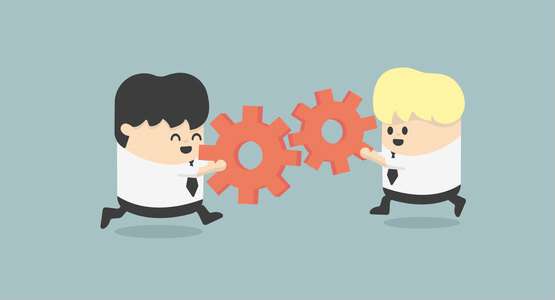A team – and the way members of this team work together - can make or break a project, so developing an effective project team is one of the primary responsibilities of a
project manager.
However, it's not always as easy as it sounds. When you conduct interviews for team members, you're usually focusing on the individual. And although you might be able to discern to some extent whether your employee would work well in your team, it's not always certain.

In fact, every member of your team might seem like a team player at first, but you won't be able to know how they actually work until your project starts and they need to work together.
So what can you do to create an
effective team and ensure the success of your project? Below are my top five tips for managing effective project teams.
1. Spend some time building your team
Throwing an untested, shiny-new team head first into the project is never a good idea. Before your project truly kicks into high gear, assign small tasks to the team to make them collaborate. In order for your team to be at its best, you need to give the team members time and space to get used to each other and adapt to different personalities and work styles.
This also gives you an opportunity to observe how your people work with each other. There will be some who get along well and would improve each other's performances. In some cases, however, the opposite might be true. Observing them before the project kicks off will help you assign essential tasks in the project planning stage.
Take a note of all the people who seem to work better alone, as well as those who get along well with everyone. You should also understand the level of productivity of each team member. Based on how everyone works and interacts with others, you can plan your project tasks with maximum efficiency.
2. Create unity
Regardless of what the overall aim of your project is or what industry you work in, your team will consist of an eclectic mix of people so, as the project leader, you need to ensure that they have something in common that unites them. The best way to do this is to create a team identity.
Give your team a goal and a vision. If you have divided your workforce into several different teams, you can find ways to introduce friendly competition, not only to increase productivity, but also to reinforce team identity. People work better if they feel like they are a part of something bigger and are contributing in a vital way. Competitiveness can forge better team relationships and drive your project ahead.
It also helps to define team procedures based on the way members work and handle various tasks. You can encourage them to come up with their own procedures and ways of communication. This way, they will find a method they're comfortable with. If they're comfortable, they will work better.
You also need to pay careful attention to any
arguments that might develop. Sometimes your employees will be able to resolve all their personal issues without your interference. In this case (as long as it doesn't affect their working relationship), you shouldn't be concerned. However, if they lose their ability to work with each other, you might need to consider involving yourself in the equation.
As a project manager, you need to acknowledge everyone's skills by clarifying their authority. For example, if one person amongst your employees is the best artist and graphic designer, they should have authority in the tasks that require graphic design and an artistic eye.
3. Specify roles
Make sure to establish a chain of command right at the beginning so that your team can function properly. This is especially crucial when you're in charge of a large workforce for a long-term project. You need to implement a proper structure, so that the communication between different teams and their members happens smoothly.
Some managers believe that they don't need to establish a command structure and that it would disrupt individual creativity. However, without a clear definition of roles and authority among the team, your employees might not be able to work with complete confidence. Contrary to popular belief, structure is important even in a free-flowing and creative environment.

The best way to give your workforce a structure is to distribute responsibility among your team members. Select a person in every team who will have to supervise the overall task. He can be the person responsible for keeping the entire group on track, and ensuring all aspects of their assignment are coming along well. This person will have the primary responsibility.
The secondary responsibility falls on individual team members who are assigned portions of the task. For example, if one particular unit has been assigned the design, the primary responsibility rests on the design team leader while the secondary responsibility lies on the shoulders of individual designers who handle various tasks. You can also select a person to do a final quality check before the task is submitted.
4. Motivation
Keeping a team motivated is a full time job, especially during long term projects. If the work becomes too monotonous or stressful, your employees might start to get bored or irritated, which can lead to a drop in momentum and productivity.
The key to a productive workforce is to create opportunities and avenues that will
motivate them. One way to achieve this is by setting goals and targets. The end of the project is a distant goal to aspire to, and it won't generate much excitement in your employees. If you set challenging goals and encourage a bit of competitiveness, you'll bring new life to the project.
Another way to motivate your teams is by showing them their progress. Let them know if they've achieved any milestones or set any records. If they're aware of their own contribution, they might want to work even harder to reach more targets.
5. Accountability
Holding a person accountable for their mistakes, their lack of productivity or teamwork is vital for the smooth progress of your project. There are certain managers who feel uncomfortable and would be happy to avoid the subject, but that's not a good idea. By holding your employees accountable, you're encouraging productivity amongst all your team members. This also shows that mistakes won't be ignored and you take them and their contribution to the project seriously.
Do you have any other tips for managing project teams? Make sure to let us know below! 

























